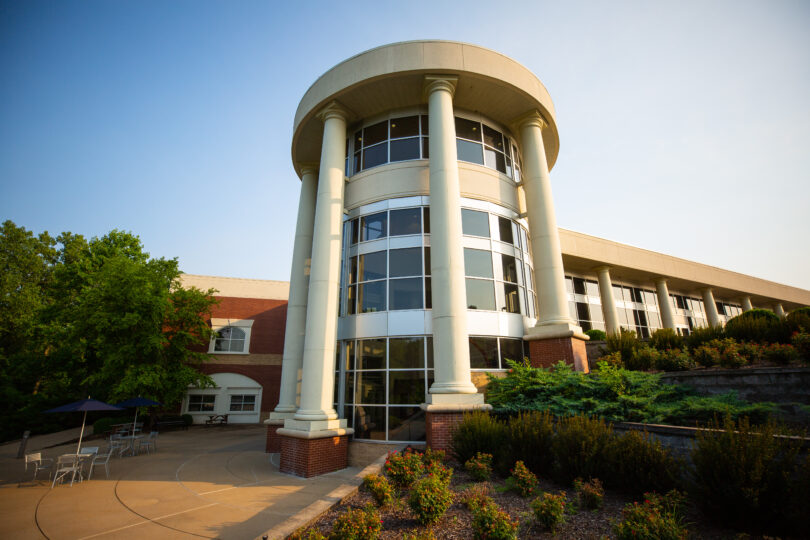Federal Student Loans
Students are offered the maximum amount of federal student loans for which they are eligible at their individual grade level, need, up to the cost of attendance for their program, and up to lifetime limits. You can decline to use these loans, or you can borrow less than the amount offered.
Need Help?
Loan Options
Federal Direct Subsidized Student Loan
A federal loan for undergraduate students to help cover the cost of higher education. The subsidized amount varies up to $3,500 per year for grade level one (freshman); $4,500 per year for grade level two (sophomore); and $5,500 per year for grade levels three (junior) through five (fifth year senior). Students must first file the Free Application for Federal Student Aid (FAFSA) and meet all other federal eligibility requirements. This is a need-based loan and the government will pay the interest while the students are in school. Students must be enrolled for at least 6 credit hours each semester. Repayment will begin six-months after the students graduate, leave school, or drop below half-time enrollment.
The current interest rate for Federal Direct Subsidized Student Loans is 4.99%.
The government charges a loan origination fee of 1.057% on all 22-23 Direct Subsidized Loans. The loan fee is a percentage of the loan amount and is proportionately deducted from each loan disbursement.
Federal Direct Unsubsidized Student Loan
A federal loan for students to help cover the cost of higher education. The amount for all undergraduate student levels is $2,000 per academic year, and up to $20,500 per academic year for graduate students. Students must first file the Free Application for Federal Student Aid (FAFSA) and meet all other federal eligibility requirements. This loan is not need-based, and the government does not pay the interest while the students are in school. However, students do have the option to pay on it while they are still in school. Students must be enrolled for at least 6 credit hours each semester. Repayment will begin six-months after the students graduate, leave school, or drop below half-time enrollment.
Additional Federal Direct Unsubsidized Student Loan
A federal loan for students to help cover the cost of higher education. The amount varies up to $4,000 per year for grade levels one (freshman) and two (sophomore); $5,000 per year for grade levels three (junior) through five (fifth year senior). Students must first file the Free Application for Federal Student Aid (FAFSA) and meet all other federal eligibility requirements. The eligibility for additional unsubsidized student loan is based off of the denial of a parent plus loan for credit reasons. The parent must apply for the PLUS loan and be denied. This loan is not need-based, and the government does not pay the interest while the students are in school. However, students do have the option to pay on it while they are still in school. Students must be enrolled for at least 6 credit hours each semester. Repayment will begin six-months after the students graduate, leave school, or drop below half-time enrollment.
The current interest rate for Federal Direct Unsubsidized Student Loans is 4.99% for undergraduates and 6.54% for graduate students.
The government charges a loan origination fee of 1.057% on all 22-23 Direct Unsubsidized Loans. The loan fee is a percentage of the loan amount and is proportionately deducted from each loan disbursement.
How to Apply for a Direct Student Loan
Application Process
FAFSA (https://studentaid.gov)
Entrance Counseling (https://studentaid.gov)
Subsidized / Unsubsidized Master Promissory Note (MPN) (https://studentaid.gov)
Federal Parent Loan for Undergraduate Student (PLUS)
A federal loan that is offered to parents of undergraduate students to help pay for education expenses. The amount of the loan is limited to the cost of education minus financial aid. The eligible amount of the loan may vary for each applicant/student. Students must be enrolled for at least 6 credit hours each semester. Repayment will begin sixty days after the school receives the last disbursement of the loan. Parents must log in to https://studentaid.gov to apply. If approved, they will then need to sign the Loan Agreement for a PLUS Loan (MPN). This is a legal document indicating parents promise to repay the federal student loan(s) and any accrued interest and fees.
The current interest rate for Federal Direct Parent PLUS Loans is 7.54%.
The government charges a loan origination fee of 4.228% on all 22-23 Direct Parent PLUS Loans. The loan fee is a percentage of the loan amount and is proportionately deducted from each loan disbursement.
PLUS Loan for Graduate Students
A federal loan that can be used to cover the costs of graduate school. Students must first reach their Direct Unsubsidized Loan aggregate limit for eligibility. The amount of the loan is limited to the cost of education minus financial aid. The eligible amount of the loan may vary for each applicant/student. Students must be accepted into the Graduate program and be enrolled for at least 3 hours each semester. Repayment begins after the school receives the last disbursement of the loan, but payments are deferred while the student is enrolled at least half time. Students must log in to https://studentaid.gov to apply. Students will then need to sign the Loan Agreement for a PLUS Loan (MPN). This is a legal document indicating the student promises to repay the federal student loan(s) and any accrued interest and fees.
The current interest rate for Federal Direct Graduate PLUS Loans is 7.54%.
The government charges a loan fee of 4.228% on all 22-23 Direct Graduate PLUS Loans. The loan fee is a percentage of the loan amount and is proportionately deducted from each loan disbursement.
Need help with your loan documents? See our Completing Required Loan Documents page.
Public Service Federal Student Loan Forgiveness
The Public Service Loan Forgiveness (PSLF) Program forgives the remaining balance on your Federal Direct Loans after you have made 120 (10 years) of qualifying payments under a qualifying repayment plan while working full-time for a qualifying employer. However, your loan will only be forgiven if you meet all PSLF Program eligibility conditions. Get more information and access the PSLF tool here.
Cancer Treatment Deferment
Borrowers who are undergoing cancer treatment and wish to request a deferment of their federal student loan payments should complete a request form and submit it to their loan servicer. Cancer Treatment Federal Student Loan Deferment Form
Alternative/Private Loan Options
Alternative loans, sometimes referred to as private loans, can supplement the other forms of aid a student generally receives. While we cannot suggest a specific lender to a student, we do maintain a historical list of loan companies that our students have used in recent years. Our lender list can be accessed through the following link: Alternative/Private Lenders
Note to Military Service Members: MBU is obligated to provide Service members with the opportunity to meet with a a financial aid counselor and receive appropriate loan counseling before offering, recommending, arranging, signing-up, disbursing, or enrolling Service members for private student loans. Contact us to arrange a meeting.


